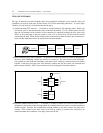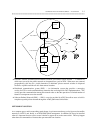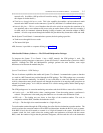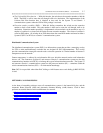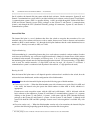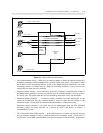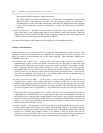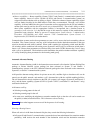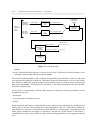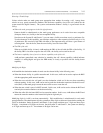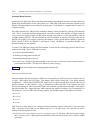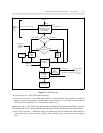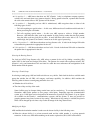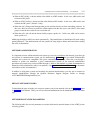2-10 COMMUNICATION SYSTEM NETWORKING — AN OVERVIEW
_ ___________________________________________________________________________________________________________________________
_ ___________________________________________________________________________________________________________________________
_ ___________________________________________________________________________________________________________________________
the extension and RNX number to AAR for processing.
The UDP function is available on the System 75 and Generic 1 communications systems when
either the UDP or PNA package is activated. On the DIMENSION, System 85, and Generic 2
communications systems, it becomes available only when the ETN (Standard Network) package is
active. (On the DIMENSION, System 85, and Generic 2 systems, the UDP function is called RNX
Steering.)
• DACs and extensions — Regardless of the networking software that is active, callers may dial the dial
access code (DAC) of an outgoing trunk group to access another switch in the network. When this
happens, the internal dial plan uses the DAC to find an outgoing trunk group. The system sends the call
to the next switch over the trunk group that the DAC designates.
Note that DAC dialing and AAR feature-access-code dialing are not compatible with DCS.
Auxiliary Call Information
Certain information can be associated with a call to help the switch determine how best to route it. This
information consists of four parameters: the conditional call routing count, the facility restriction level
(FRL), the partition of the originating call, and the bearer capability. These parameters influence how
AAR/ARS routes a call:
• Conditional call routing count — Used to route AAR calls on the System 85 and Generic 2
communications system. It tracks the number of satellite hops (or other types of routes that might
influence a call’s quality adversely) that have been used to route a call thusfar. The number of satellite
hops is important because using satellite facilities too many times along a call’s route produces
unacceptable delays in voice calls and seriously degrades the transmission quality. If the satellite hop
count is equal to two or more, the switch chooses a high-quality, terrestrial facility to route the call.
Note that the conditional call routing count is used during pattern selection to determine the call
category for AAR calls on the System 85 and Generic 2.
• Facility restriction level (FRL) — Used to select a route for both AAR and ARS calls on all
communications systems. Each terminal and trunk is assigned an FRL (0-7) to help the switch
determine how appropriate a particular facility is for a call. For a call to be completed over a particular
facility, the FRL of the facility must be equal to or less than the FRL of the originating station or trunk.
This is why important users are given FRLs of 7, and facilities that everyone can use are given FRLs of
0.
Note that the FRL associated with the line’s or trunk’s class of service is the default FRL for each call
originating there. The default FRL can be raised when the caller enters an authorization code, the call
has timed-out from a outgoing trunk’s queue (System 85 and Generic 2 only), the FRL associated with
a trunk call (stored in the traveling class mark, see below) is higher than the trunk FRL, or the caller has
dialed a 4- or 5-digit extension number and the call must be routed to another switch in the private
network (System 85 and Generic 2 only).
• Partition number — This parameter is used to route ARS calls when tenant services software is active.
When communications system resources are shared among different companies, it becomes important
for callers to use only those facilities that are allocated to them. The partition number (System 85 and
Generic 2) or partition group number (System 75 and Generic 1) tells the system where the call
originated so it can use allocated facilities to route the call. Note that the partition number is used in the
System 85 and Generic 2 during pattern selection to determine the call category for ARS calls.



